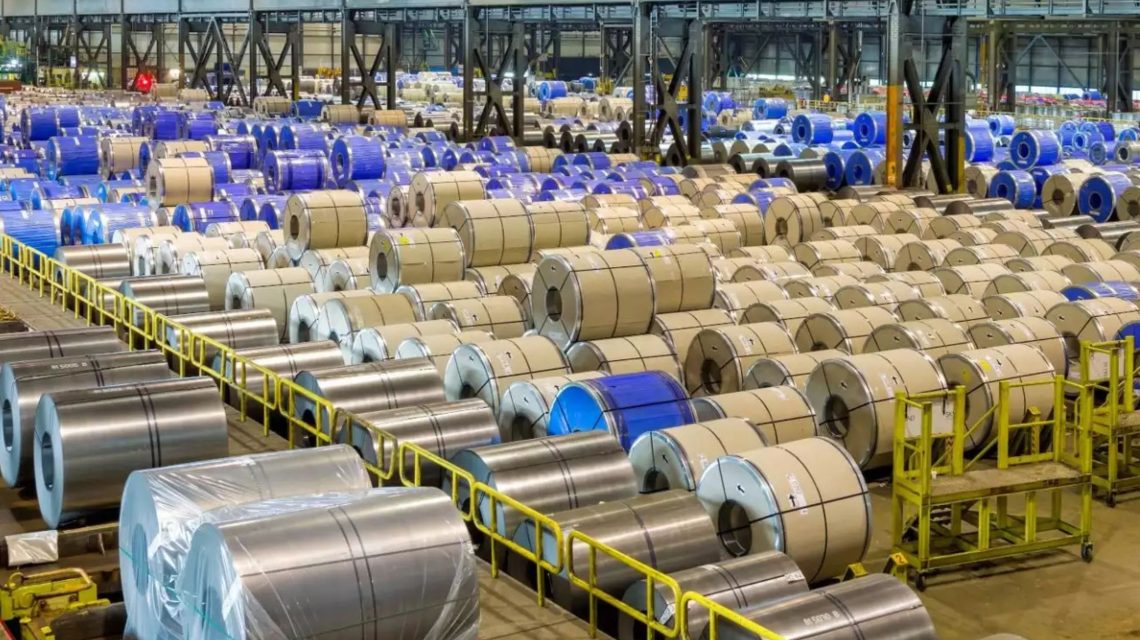Tata Steel, a global steel behemoth, is navigating a complex landscape of economic challenges, geopolitical uncertainties, and the ever-pressing need for environmental sustainability. In this dynamic environment, the company’s approach to growth and financial management has become a focal point for investors and industry observers alike.
CFO Koushik Chatterjee’s recent emphasis on prioritising sustainable growth over debt reduction underscores a critical shift in the company’s strategic direction. This blog post will delve into the nuances of this statement, analysing its implications for Tata Steel’s future, examining the company’s current financial position and growth strategies, and assessing the challenges and opportunities that lie ahead.
Sustainable Growth: A Paradigm Shift
For decades, many corporations, including steel giants, have prioritized debt reduction as a primary financial objective. This focus often led to short-term cost-cutting measures that could negatively impact long-term growth and competitiveness. However, the global landscape has undergone a significant transformation, with sustainability emerging as a paramount concern for businesses, investors, and consumers alike.
Chatterjee’s statement signifies a recognition of this evolving reality. By prioritizing sustainable growth, Tata Steel aims to:
- Enhance long-term value creation: Sustainable practices, such as reducing carbon emissions, improving resource efficiency, and fostering social responsibility, can enhance a company’s reputation, attract environmentally conscious investors, and ultimately drive long-term value creation.
- Improve resilience: A sustainable business model is better equipped to navigate the challenges of climate change, resource scarcity, and evolving regulatory landscapes. This resilience is crucial for long-term success in an increasingly uncertain world.
- Gain a competitive edge: By embracing sustainability, Tata Steel can differentiate itself from competitors, attract and retain top talent, and gain a first-mover advantage in emerging markets for sustainable products and services.
Examining Tata Steel’s Current Position
To understand the implications of prioritizing sustainable growth, it’s crucial to examine Tata Steel’s current financial position and growth strategies.
Financial Performance:
- Revenue and Profitability: Tata Steel has a significant global presence, with operations spanning across continents. The company has demonstrated resilience in navigating cyclical downturns in the steel industry while maintaining a strong market position.
- Debt Levels: While debt levels have been a concern at times, the company has taken steps to reduce its debt burden through a combination of asset sales, operational improvements, and strategic investments.
- Capital Expenditure: The company has consistently invested in capital expenditure to modernize its operations, enhance productivity, and improve its environmental performance.
Growth Strategies:
- Organic Growth: Tata Steel has focused on organic growth through operational excellence, technological advancements, and market expansion. This includes investments in areas such as advanced high-strength steels, specialty steels, and value-added products.
- Strategic Acquisitions: The company has pursued strategic acquisitions to expand its product portfolio, enter new markets, and enhance its competitive position.
- Focus on Sustainability: Tata Steel has recognized the importance of sustainability and has implemented various initiatives to reduce its environmental impact
Key Sustainability Initiatives:–
- Reducing Carbon Emissions: Tata Steel has set ambitious targets for reducing its carbon emissions, including a commitment to achieve net-zero emissions by 2050. The company is exploring various pathways to decarbonization, such as investing in green hydrogen technologies, carbon capture and storage, and renewable energy sources.
- Circular Economy: Tata Steel is actively promoting a circular economy approach by increasing the recycling of steel scrap, reducing waste generation, and developing innovative products with a longer lifespan.
- Social Responsibility: The company is committed to social responsibility, focusing on community development, employee well-being, and ethical business practices.
Challenges and Opportunities
Prioritizing sustainable growth presents both challenges and opportunities for Tata Steel:
Challenges:
- Balancing Growth with Sustainability: Striking the right balance between growth and sustainability can be challenging. Investing in sustainable initiatives requires significant capital expenditure and can impact short-term profitability.
- Navigating Regulatory Landscape: The evolving regulatory landscape related to environmental protection and climate change poses significant challenges for the steel industry.
- Competition: Intense competition from domestic and international players necessitates continuous innovation and adaptation to remain competitive.
- Geopolitical Risks: Geopolitical uncertainties, such as trade wars and supply chain disruptions, can significantly impact the steel industry’s performance.
Opportunities:
- Growing Demand for Sustainable Products: The demand for sustainable products and services is rapidly increasing, creating significant growth opportunities for companies that can effectively address the needs of environmentally conscious consumers.
- Technological Advancements: Advancements in technology, such as artificial intelligence, machine learning, and advanced materials, can drive innovation and improve operational efficiency.
- Government Support: Governments worldwide are increasingly supporting the transition to a low-carbon economy through policies, incentives, and investments.
- Collaboration and Partnerships: Collaborating with other stakeholders, such as suppliers, customers, and research institutions, can accelerate the development and deployment of sustainable solutions.
The Road Ahead
Tata Steel’s decision to prioritize sustainable growth over debt reduction reflects a forward-looking approach that recognizes the long-term value of sustainability. By embracing this new paradigm, the company aims to:
- Position itself for long-term success: In an increasingly interconnected and complex world, sustainability is no longer just a social responsibility; it is a critical driver of business success.
- Create shared value: By integrating sustainability into its core business strategy, Tata Steel aims to create shared value for all stakeholders, including shareholders, employees, customers, and the communities in which it operates.
- Lead the industry transition: By embracing sustainable practices and technologies, Tata Steel can play a leading role in the transition to a low-carbon steel industry.
Conclusion
Tata Steel’s journey towards sustainable growth will undoubtedly be challenging, but the potential rewards are significant. By navigating the challenges and capitalizing on the opportunities, the company can not only ensure its long-term success but also contribute to a more sustainable future for the steel industry and the planet.


